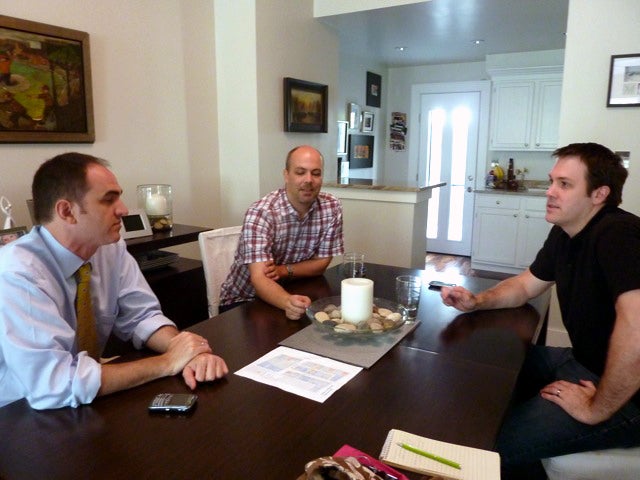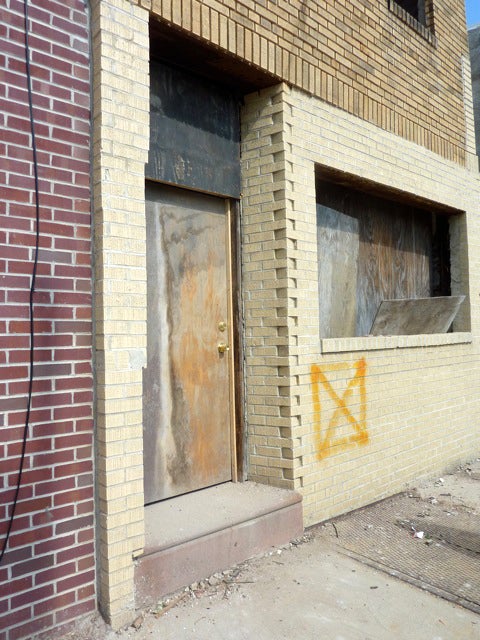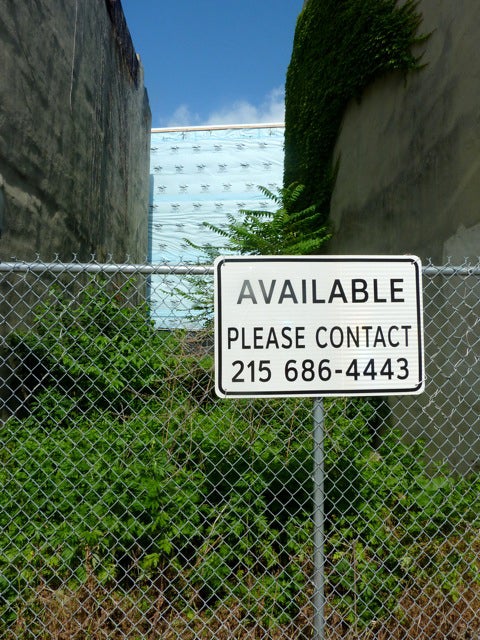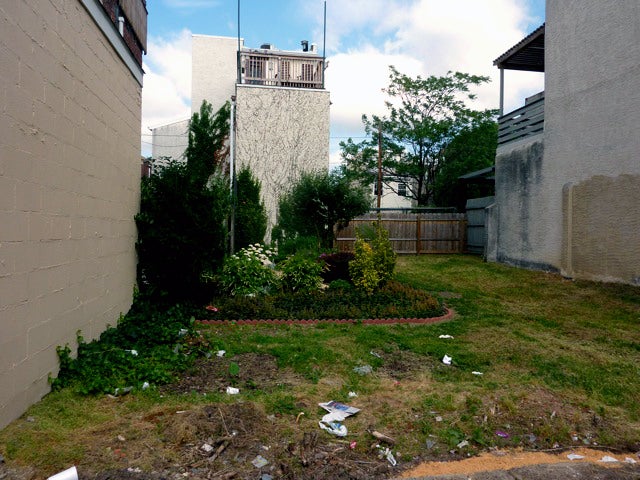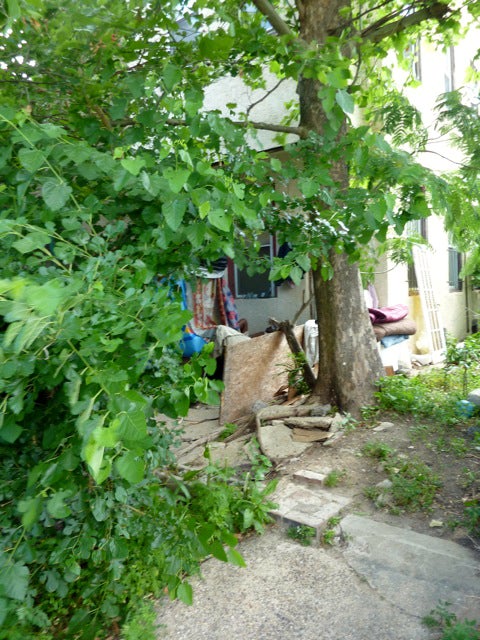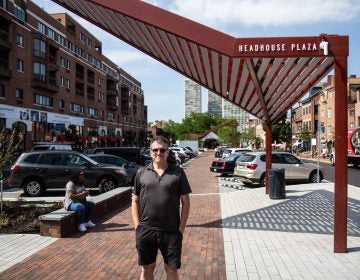Refusing to be forgotten
Blue hydrangeas bloom in pots outside three-story red brick homes, and wooden window boxes overflow with petunias and ivy along the tidy blocks of Queen Village. A handful of multi-million dollar houses dot the area and $500,000 homes are certainly the norm.
But round a corner and you’re launched into a persistent and unsightly hole in this otherwise scrumptious donut. Hidden inside a warren of alleys, it’s an area blighted by crumbling structures and scarred by squatters. Here, wildflowers grow waist-high in the vacant lots and grass sprouts from cracked sidewalks.
“Having this bombed-out pocket in the middle of an otherwise intact neighborhood filled with expensive homes makes no sense,” says Charlie Moleski, an architectural project manager who’s lived for five years on a small street just west of the derelict alleys.
Moleski, along with two neighbors, recently decided it was time to get the city to pay attention. Dubbing the area between 5th and 6th Streets and Carpenter Street and Washington Avenue, “The Forgotten Blocks,’ the trio set off on a deliberate, persistent and thorough plan to change things. Their story serves as inspiration for any citizen trying to affect change, one block at a time.
Each the father of young children, the three were spurred to action about two years ago after a shooting at the nearby Courtyard Apartments at Riverview, a privately-managed development on the site of a demolished public housing project, spilled onto their streets.
Outraged neighbors urged local police to set up a community meeting, at which they complained about drug dealing at the complex and crack houses in nearby abandoned buildings. Then-3rd District Captain Joseph McDowell committed to an increased police presence on one corner and foot patrols down the area’s dark alleys, but he also challenged those present to work with each other.
“People were really agitated and freaked out,” recalls Ted Warren, a member of the board of the Queen Village Neighbor’s Association who, along with local architect Peter Lazor, eventually joined forces with Moleski. “People were saying they were ready to move.”
After the meeting, Moleski sent an email out “to every dot gov” he could think of, from Police Chief Charles H. Ramsey to Councilman Frank DiCiccio, on down. “I asked, ‘Why are we tolerating this?” Moleski says, “and I copied the entire world.”
Soon, Warren continues, “we became impossible for people to ignore. We held meetings and created documents and took pictures. We assembled a bunch of tools to hold people’s feet to the fire.”
The trio’s first step was to walk the forgotten blocks and identify each of the 100 or so properties in the core area — occupied homes, empty lots and blighted buildings. Next, they gathered information on tax and ownership status. “We very quickly started to see patterns,” says Lazor. “There were, maybe, five delinquent owners responsible for much of what was wrong.”
It took about a year for them to march through the list of properties. “When you begin to look at a neighborhood in this way, you begin to understand how hard it is for L&I to stay on top of these issues, ” observes Moleski. “It demonstrates the enormity of tracking these kinds of problems even in a two-block radius.”
Armed with the resultant spreadsheet, the team approached the city’s Department of Licenses and Inspections. “We basically did their homework for them,” Moleski says.”I never thought it would become my job to take matters into my own hands, but it did.”
As L&I methodically sent out inspectors, then notices, long-absent landlords of long-neglected properties began to act.
One owner demolished a row of four buildings, but others quickly started rehabs. When DiCicco tried to use NTI funds to seize one set of properties, the owner caught wind and “pulled some permits and started stuccoing the house,” laughs Warren. Even commercial properties, such as a deli whose building featured boarded-up second- and third-story windows, quickly spruced up.
“L&I didn’t have to compel one demolition on our behalf,” says Moleski. “We didn’t cost the city one dime.”
There have, of course, been obstacles and frustrations along the way. Some property owners haven’t been able to be identified, and the pace of bureaucracy can be maddeningly slow. “No matter what contacts we’ve made, we have to constantly call back and follow up,” says Lazor. “No one’s ever going to take this project over for you. It’s on you to stay on top of everything and to CC (carbon copy) everyone’s boss.”
Although neighbors have pitched in for cleanups, and the neighborhood associations of Queen Village and Bella Vista meet regularly with them (as do representatives from the police, DiCicco’s office, and the Courtyard Apartments), the day-to-day grind lies mostly in the hands of the three men.
They’re intent on staying on top of things. “It’s frustrating that there are still empty lots with busted sidewalks,” says Lazor. “They’re supposed to be fenced off and kept free of weeds. It seems like it would be easy enough to find one rep for each neighborhood to liaison on these issues.”
Progress keeps coming. Across the street from Warren, six new houses (asking price: $490,000) are being built, with more slated to break ground shortly. Cameras have been installed on critical corners. Through his contacts, Moleski is working to market some of the sites — such as a large parcel where a rotting warehouse was recently demolished — to developers.
“Anyone could do these things, anywhere in the city,” Warren observes. “I do think because we’re in this transitional neighborhood, our efforts especially spoke to people. The neighborhood was changing, anyway. We kicked it into high gear by focusing city agencies on the problems holding it back.”
The Forgotten Blocks has a poignant ring to it, like something out of a Depression-era screwball comedy. But for these ambitious neighbors, the moniker makes a strong point. “We’ve thought of changing the name,” says Warren, “because maybe it’s too negative. In the end, though, it’s served us really well so far.”
Contact JoAnn Greco at www.joanngreco.com
Check out her new online magazine, TheCityTraveler at www.thecitytraveler.com
WHYY is your source for fact-based, in-depth journalism and information. As a nonprofit organization, we rely on financial support from readers like you. Please give today.




